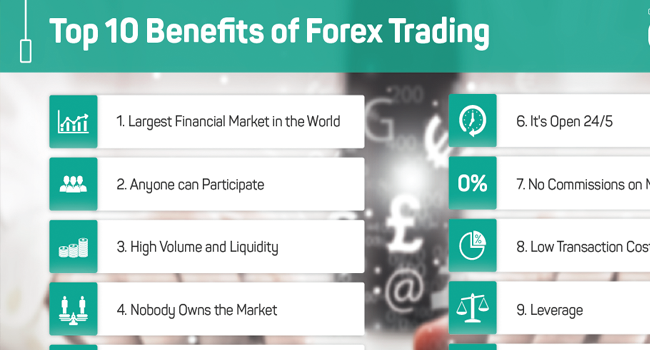Algorithmic Trading in Forex: Exploring Automated Strategies
Introduction
In recent years, algorithmic trading has revolutionized the financial markets, including the foreign exchange (Forex) market. Algorithmic trading, or algo trading or automated trading, involves using computer programs and algorithms to execute trading decisions. This approach has gained significant popularity due to its ability to analyze vast amounts of data, make fast trading decisions, and eliminate human biases. In the context of Forex, algorithmic trading has opened up new avenues for traders to capitalize on market opportunities efficiently. This article explores the concept of algorithmic trading in Forex and delves into the various automated strategies used in this domain.
Understanding Algorithmic Trading in Forex
Algorithmic trading in Forex involves using algorithms to execute trades in the currency market automatically. These algorithms analyze historical price data, market trends, economic indicators, and technical patterns. By processing these inputs, algorithms can identify potential trading opportunities and execute trades based on predefined rules and parameters.
The Benefits of Algorithmic Trading in Forex
Speed and Efficiency:
One of the primary advantages of algorithmic trading in Forex is its ability to execute trades at high speeds. Since algorithms can analyze and process vast amounts of data within seconds, they can identify and act on trading opportunities faster than human traders. This speed is critical in the fast-paced Forex market, where prices change rapidly.
Elimination of Human Bias:
Emotions and biases often impact human trading decisions. Fear, greed, and other psychological factors can cloud judgment and lead to poor trading outcomes. Algorithmic trading eliminates these biases by relying on predefined rules and parameters, ensuring that trades are executed based on objective criteria rather than emotions.
Backtesting and Optimization:
Algorithmic trading allows traders to backtest their strategies using historical data. By simulating trades on past market conditions, traders can assess the effectiveness and profitability of their strategies before deploying them in live trading. Additionally, algorithms can be optimized using various parameters to enhance performance and adapt to changing market conditions.
Automated Strategies in Forex Algorithmic Trading
Trend Following:
The trend-following strategy is one of Forex’s most common automated strategies. It involves identifying and capitalizing on market trends by entering long or short positions based on the direction of the trend. Trend-following algorithms use indicators such as moving averages, trend lines, and momentum oscillators to determine the trend and execute trades accordingly.
Mean Reversion:
Mean reversion strategies operate on the premise that prices tend to revert to their average or mean value after deviating from it. These strategies involve identifying overbought or oversold conditions and taking positions opposite the prevailing trend. To identify such opportunities, mean reversion algorithms utilize indicators like Bollinger Bands, relative strength index (RSI), and stochastic oscillators.
Breakout Trading:
Breakout strategies capitalize on price breakouts from significant support or resistance levels. These algorithms monitor price levels and execute trades when prices break above resistance or below support levels. Breakout strategies can be based on chart patterns, such as triangles or rectangles, or they can use volatility indicators like Average True Range (ATR) to identify breakouts.
Arbitrage:
Arbitrage strategies exploit price discrepancies across different markets or instruments to generate profits. In Forex, this can involve taking advantage of price differences between currency pairs or variations in prices quoted by different brokers. Arbitrage algorithms constantly scan multiple markets, identify price discrepancies, and execute trades to profit from temporary imbalances.
News-based Trading:
News plays a significant role in shaping Forex markets. News-based trading strategies involve the automated analysis of news releases, economic indicators, and other market-moving events to determine their impact on currency prices. Algorithms can react to such events instantly, automatically executing trades based on the anticipated market reaction to the news.
Scalping:
Scalping strategies aim to profit from small price movements in the Forex market. These algorithms execute many trades quickly, targeting small gains from each trade. Scalping strategies rely on high-speed execution, low-latency connections to trading platforms, and access to real-time market data to identify and capitalize on these short-term price fluctuations.
Machine Learning-based Strategies:
Machine learning techniques, such as neural networks and genetic algorithms, have found their applications in Forex algorithmic trading. These strategies involve training algorithms on historical market data to learn patterns and predict future price movements. Machine learning-based algorithms adapt and evolve, continuously improving their performance based on new data.
Risk Management Considerations
While algorithmic trading in Forex offers numerous benefits, it also has inherent risks. Traders must carefully consider risk management strategies to protect their capital and minimize potential losses.
Some key risk management considerations include:
Proper Position Sizing:
Determining the appropriate position size for each trade is crucial to managing risk. Algorithms should be programmed to calculate position sizes based on risk tolerance, account size, and market conditions. It helps to limit the impact of adverse price movements on the trading account.
Stop Loss Orders:
Implementing stop loss orders is essential to limit potential losses. Algorithms should include stop loss levels that automatically exit a trade if the market moves against the position beyond a certain threshold. This helps to prevent significant drawdowns and protects the trading account from excessive losses.
Diversification:
Allocating investments across different currency pairs and strategies can help spread the risk. Diversification reduces the dependency on a single market or strategy and mitigates the impact of losses from specific trades or market conditions.
Monitoring and Adjusting Strategies:
Continuous monitoring of algorithmic trading strategies is crucial. Traders should regularly assess the performance of their algorithms, identify any potential issues or underperforming strategies, and make necessary adjustments to improve overall profitability.
High-Frequency Trading (HFT):
High-frequency trading is a subset of algorithmic trading that focuses on executing many trades within extremely short time frames. HFT algorithms exploit small price discrepancies and market inefficiencies that may exist for only milliseconds or microseconds. These strategies rely on powerful hardware, low-latency connections, and co-location services to gain a competitive edge in speed and execution.
Quantitative Trading:
Quantitative trading involves using mathematical models and statistical techniques to develop and execute trading strategies. These strategies often leverage complex algorithms and mathematical formulas to analyse market data, identify patterns, and make trading decisions. Quantitative traders typically rely on historical data, statistical analysis, and mathematical models such as regression analysis, time series analysis, and Monte Carlo simulations to develop their strategies.
Execution Algorithms:
Execution algorithms are a specific type of algorithmic trading strategy that focuses on optimizing trade execution. These algorithms aim to minimize slippage, reduce market impact, and improve overall trade execution quality. They may use techniques such as smart order routing, the time-weighted average price (TWAP), the volume-weighted average price (VWAP), or implementation shortfall to achieve optimal execution outcomes.
Risk Arbitrage:
Risk arbitrage strategies capitalize on price discrepancies between a target company’s stock and its associated securities (such as options or futures contracts) during corporate events, such as mergers, acquisitions, or spin-offs. Algorithmic trading can efficiently analyze and exploit these arbitrage opportunities by automatically executing trades to profit from price convergence
Integration of Fundamental and Technical Analysis:
Algorithmic trading strategies can combine both fundamental and technical analysis to make trading decisions. Fundamental analysis involves evaluating economic indicators, financial statements, and news events to assess the intrinsic value of a currency. Technical analysis, on the other hand, involves analyzing historical price patterns, trends, and chart indicators to identify trading opportunities. By integrating both approaches, algorithms can benefit from a more comprehensive Forex market analysis.
Regulatory Considerations:
Algorithmic trading in Forex is subject to regulatory oversight and guidelines. Financial authorities in various jurisdictions have implemented regulations to ensure fair and orderly markets and address market manipulation concerns or systemic risks associated with algorithmic trading. Traders engaging in algorithmic trading should know and comply with the relevant regulatory requirements in their respective jurisdictions.
Continual Evolution:
Algorithmic trading in Forex is a dynamic field that continually evolves as technology advances. Traders and developers constantly explore new strategies, refine existing ones, and adopt advanced technologies such as artificial intelligence and machine learning. These advancements aim to improve trading performance, enhance risk management techniques, and adapt to changing market conditions.
By incorporating these additional points, you can further expand on the intricacies and advancements in algorithmic trading in Forex, providing a comprehensive overview.
Co-location Services:
Co-location services allow algorithmic traders to place their trading servers close to the exchange’s data centre. By reducing network latency, co-location services enable traders to receive market data and execute trades with minimal delay, giving them a competitive advantage in speed and execution.
Market Making:
Market-making strategies provide liquidity by placing simultaneous buy and sell orders for a particular currency pair. Market-making algorithms continuously monitor and adjust bid/ask prices to ensure a ready liquidity supply. These strategies aim to profit from the bid and ask prices spread.
Sentiment Analysis:
Sentiment analysis algorithms analyze social media feeds, news articles, and other market sentiment sources to gauge market participants’ overall mood and sentiment. By identifying positive or negative sentiment, these algorithms can make trading decisions based on the anticipated impact of sentiment on currency prices.
Execution Speed and Latency Arbitrage:
In algorithmic trading, even small differences in execution speed can be exploited for profit. Latency arbitrage strategies involve taking advantage of price discrepancies due to differences in the time it takes for information to reach different trading platforms. Algorithms monitor multiple trading venues and execute trades on platforms where prices are slower to update, allowing traders to profit from these temporary inefficiencies.
Risk Management Algorithms:
Risk management algorithms play a crucial role in algorithmic trading by continuously monitoring and managing risk exposures. These algorithms can automatically adjust position sizes, implement trailing stop losses, or dynamically hedge positions based on market conditions and predefined risk parameters. Effective risk management algorithms help protect capital and ensure long-term profitability.
Regulatory Challenges:
Algorithmic trading has faced regulatory challenges as authorities strive to ensure fair and transparent markets. Regulators have imposed measures to prevent market manipulation, enhance market surveillance, and ensure algorithmic trading systems are robust and resilient. Traders engaging in algorithmic trading need to comply with these regulations and implement appropriate risk controls and compliance procedures.
Ethical Considerations:
The rise of algorithmic trading has sparked debates around ethics and fairness in financial markets. Critics argue that algorithmic trading can exacerbate market volatility, contribute to flash crashes, or create an unfair advantage for institutional traders. Ethical considerations involve ensuring algorithms are designed and used responsibly, with appropriate safeguards to prevent unintended consequences or unfair market practices.
Human Oversight and Intervention:
While algorithmic trading relies on automated systems, it is important to maintain human oversight and intervention. Traders should monitor the performance of algorithms, review their strategies periodically, and intervene when necessary to adjust parameters or deactivate algorithms in response to unexpected market conditions or system malfunctions.
By incorporating these additional points, you can delve deeper into the various aspects, challenges, and considerations surrounding algorithmic trading in the Forex market.
Conclusion
Algorithmic trading has significantly transformed the Forex market by introducing automated strategies to process vast amounts of data, make fast trading decisions, and eliminate human biases. The benefits of algorithmic trading include speed, efficiency, and the ability to capitalize on market opportunities objectively. Various automated strategies, such as trend following, mean reversion, breakout trading, arbitrage, news-based trading, scalping, and machine learning-based strategies, are commonly used in Forex algorithmic trading. However, it is important to implement proper risk management measures to safeguard capital and minimize potential losses. With the continuous advancement of technology and the increasing availability of sophisticated tools, algorithmic trading is likely to continue evolving and shaping the Forex market.


